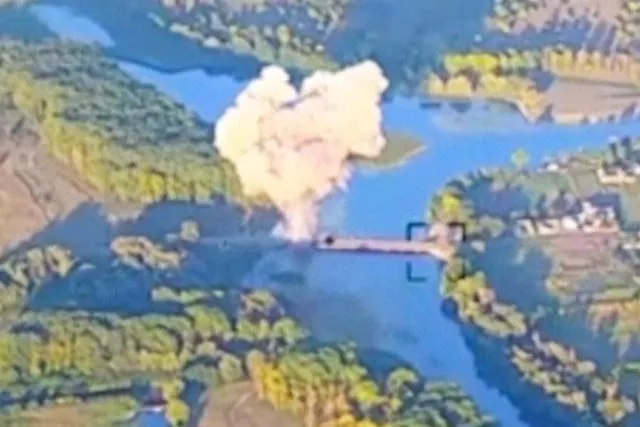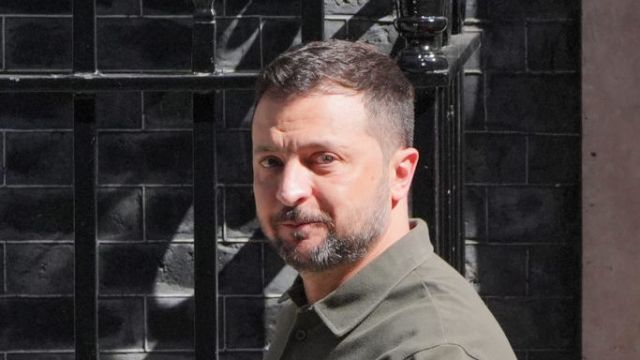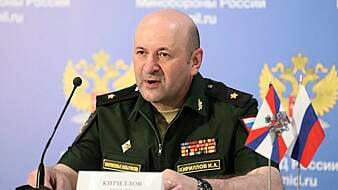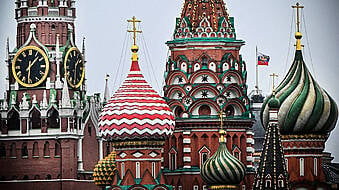Ukrainian President Volodymyr Zelenskiy has said the daring military incursion into Russia’s Kursk region aims to create a buffer zone to prevent further attacks by Moscow across the border.
It is the first time Mr Zelenskiy has clearly stated the aim of the operation, which was launched on August 6.
Previously, he had said the operation aimed to protect communities in the bordering Sumy region from constant shelling.

Mr Zelenskiy said in his nightly address “it is now our primary task in defensive operations overall: to destroy as much Russian war potential as possible and conduct maximum counteroffensive actions. This includes creating a buffer zone on the aggressor’s territory – our operation in the Kursk region”.
This weekend, Ukraine has destroyed a key bridge in the region and struck a second one nearby, disrupting supply lines as it pressed a stunning cross-border incursion that began on August 6, officials said.
Pro-Kremlin military bloggers acknowledged that the destruction of the first bridge on the Seim River near the town of Glushkovo will impede deliveries of supplies to Russian forces repelling Ukraine’s incursion, although Moscow could still use pontoons and smaller bridges.
Ukraine’s air force chief, Lt Gen Mykola Oleshchuk, on Friday released a video of an air strike that cut the bridge in two.
Less than two days later, Ukrainian troops hit a second bridge in Russia, according to Oleshchuk and Russian regional governor Alexei Smirnov.
As of Sunday morning, there were no officials giving the exact location of the second bridge attack.
But Russian Telegram channels claimed that a second bridge over the Seim, in the village of Zvannoe, had been struck.
According to Russia’s Mash news site, the attacks left only one intact bridge in the area.

The Associated Press could not immediately verify these claims.
If confirmed, the Ukrainian strikes would further complicate Moscow’s attempts to replenish its forces in Kursk and evacuate civilians.
Glushkovo is about 12 kilometres (7.5 miles) north of the Ukrainian border, and approximately 16 kilometres (10 miles) north west of the main battle zone in Kursk.
Zvannoe is located another eight kilometres (five miles) to the north west.
Kyiv has previously said little about the scope and goals of its push into Russia with tanks and other armoured vehicles, the largest attack on the country since the Second World War, which took the Kremlin by surprise and saw scores of villages and hundreds of prisoners fall into Ukrainian hands.
The Ukrainians drove deep into the Kursk region in several directions, facing little resistance and sowing chaos and panic as tens of thousands of civilians fled the area.
Ukraine’s Commander in Chief, General Oleksandr Syrskyi, claimed last week that his forces had advanced across 1,000 square kilometres (390 square miles) of the region, although it was not possible to independently verify what exactly Ukrainian forces effectively control.
Mr Zelenskiy said Ukrainian forces “achieved good and much-needed results”.

Analysts say that although Ukraine could try to consolidate its gains inside Russia, it would be risky, given Kyiv’s limited resources, because its own supply lines extending deep into Kursk would be vulnerable.
The incursion has proven Ukraine’s ability to seize the initiative and has boosted its morale, which was sapped by a failed counteroffensive last summer and months of grinding Russian gains in the eastern Donbas region.
For his part, Russian President Vladimir Putin said while visiting China in May that Moscow’s offensive that month in Ukraine’s northeastern Kharkiv region was aimed at creating a buffer zone there.
That offensive opened a new front and displaced thousands of Ukrainians.
The attacks were a response to Ukrainian shelling of Russia’s Belgorod region, Mr Putin said.
“I have said publicly that if it continues, we will be forced to create a security zone, a sanitary zone,” he said.

“That’s what we are doing.”
The move into Kursk resembled Ukraine’s lightning operation from September 2022, led by Gen Syrskyi, in which its forces reclaimed control of the northeastern Kharkiv region after taking advantage of Russian manpower shortages and a lack of field fortifications.
On Saturday, Mr Zelensky urged Kyiv’s allies to lift the remaining restrictions on using Western weapons to attack targets deeper in Russia, including in Kursk, saying his troops could deprive Moscow “of any ability to advance and cause destruction” if granted sufficient long-range capabilities.
“It is crucial that our partners remove barriers that hinder us from weakening Russian positions in the way this war demands … The bravery of our soldiers and the resilience of our combat brigades compensate for the lack of essential decisions from our partners,” Mr Zelenskiy said in a post on the social platform X.
Russia’s Foreign Ministry and pro-Kremlin bloggers have alleged that US-made HIMARS launchers have been used to destroy bridges on the Seim.
These claims could not be independently verified.
Ukraine’s leaders have repeatedly sought authorisation for long-range strikes on Russian air bases and other infrastructure used to pummel Ukraine’s energy facilities and other civilian targets, including with retrofitted Soviet-era “glide bombs” that have laid waste to Ukraine’s industrial east in recent months.

Moscow also appears to have increased attacks on Kyiv, targeting it on Sunday with ballistic missiles for a third time this month, according to the head of the municipal military administration.
Serhii Popko said in a Telegram post that the “almost identical” August strikes on the capital “most likely used” KN-23 missiles supplied by North Korea.
Another attempt to target Kyiv followed at about 7am local time, Mr Popko said, this time with Iskander cruise missiles.
Ukrainian air defences struck down all the missiles fired in both attacks on the city, he said.
Meanwhile, Russian ally Belarus has massed “nearly a third” of its army along its border with Ukraine, according to authoritarian President Alexander Lukashenko.
Mr Lukashenko told Russian state TV that Minsk was responding to the deployment of more than 120,000 Ukrainian troops to the 1,084-km frontier.
Belarus’s professional army numbers upwards of 60,000.
Ukrainian border force spokesman Andrii Demchenko said on Sunday it had not observed any sign of a Belarusian build-up.
Mr Lukashenko, who has been in power for three decades, has relied on Russian support to suppress the biggest protests in Belarus’s post-Soviet history after his 2020 re-election, widely seen as a sham both at home and abroad.
He allowed Russian troops to use Belarus’s territory to invade Ukraine and let Moscow deploy some tactical nuclear weapons on its soil.







